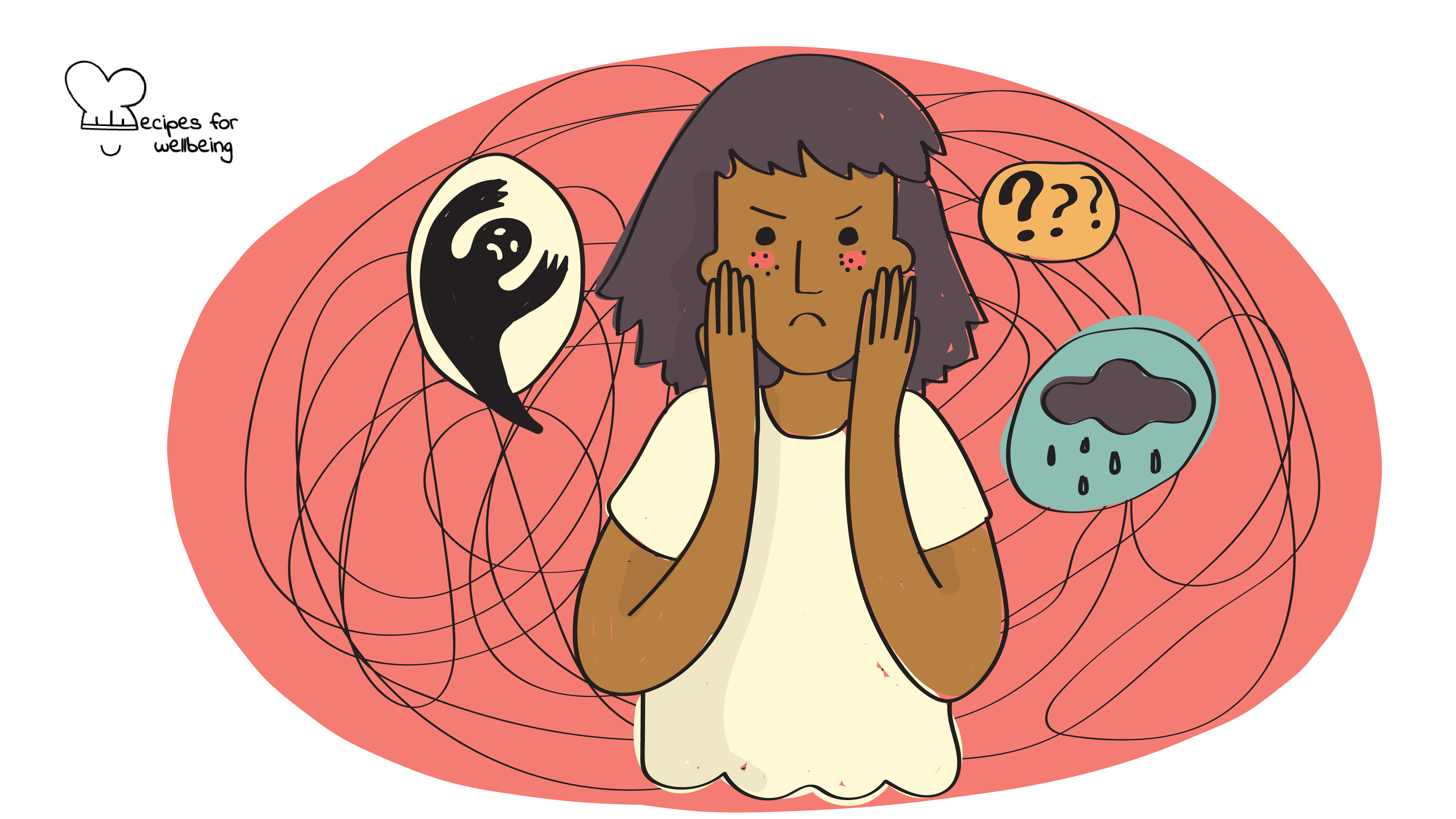
Self-care for adults with ADHD
When a flower doesn’t bloom, you fix the environment in which it blooms, not the flower. ―Alexander Den Heijer
👥 Serves: 1 person
🎚 Difficulty: Medium
⏳ Total time: Ongoing
🥣 Ingredients: Journal, calendar, self-compassion
💪 Nutritional values: Self-love, Self-trust, Confidence, Resilience, Happiness

Self-care for adults with ADHD
📝 Description
Prioritise self-care as an adult living with ADHD.
Attention-deficit-hyperactivity disorder (ADHD) is a common neurological disorder impacting inattention, hyperactivity, and impulsivity. An estimated 2.5% of adults are living with ADHD. If you are one of those, it is important to support yourself with neurodiverse specific self-care. ADHD researcher and coach Kari Miller (PhD, BCET) explains that self-care should be a balance of the following elements:
- Physical needs
- Safety and security
- Love and belonging
- Self-esteem, self-respect, and self-efficacy
- Fulfilling your talents and potential
Developing self-care practices is part of the behavioural management and they are considered coping skills as they offer tangible structures to support daily responsibilities and stresses. While there is no one-size-fits-all approach for an ADHD self-care plan, there are many complementary approaches in this recipe that you can try until you determine what works best for you!
This recipe has been created by our wellbeing content writer collaborator Marissa Del Mistro with support from the Children and Adults with Attention-Deficit/Hyperactivity Disorder Organization (CHADD).
👣 Steps
Step 1 – Control clutter
Adults living with ADHD may struggle with inattention or distractibility, making organisation an overwhelming challenge. However, breaking organisation into small, achievable steps with structures and routines can help greatly. You may wish to:
- Create specific spaces. Determine which items you reach for or use on a daily basis, such as keys and designate a spot or “home” for them. It is also useful to make a specific bin/area for things like mail and bills or items that can be easily misplaced. You may wish to use dividers or folders for different documents that you can label and colour coordinate.
- Throw away items. Make time monthly to declutter your space by donating older clothes, paperwork, books, etc.
- Use a calendar or day planner. Purchase a day planner and calendar (hint: if it’s one you like, you’re more likely to use it!) or use your smartphone/computer to help remind you of appointments, dates, and deadlines. If you opt for an electronic calendar, it’s best to set up automatic reminders. You may also use sticky notes to write lists and track reminders (hint: keep them somewhere you often see such as the fridge, bathroom mirror, or front door). You may wish to read our “Habit Tracker” recipe for further advice or our recipe on “Weekly planner for uncertain times”.
- Avoid putting things off. Oftentimes, you can avoid forgetfulness, clutter, and procrastination by completing tasks, such as filing papers, cleaning up, or returning phone calls immediately, instead of putting them off. Try to remind yourself that if a task can be done in two minutes or less, do it on the spot!
While controlling clutter will help, it is common practice to perhaps lose track of time while doing the above. To avoid this, wear a wristwatch or place a visible clock in an easy to see spot and set timers.
Step 2 – Support your attention span
You may also struggle with maintaining focus, especially when the activity isn’t particularly engaging. This could be “boring” events like meetings or lectures, which can be hard on anyone including neurotypical people, but for adults with ADHD, they can be increasingly harder. To support yourself:
- Get it in writing. If you’re attending a meeting, lecture, workshop, or another event which requires significant attention, ask for an advance copy of all relevant materials from the organiser, such as an agenda or outline. At the event, use the written notes to guide your active listening and note-taking. Writing as you listen can help you maintain focus on the speaker.
- Echo directions. If someone gives verbal instructions, say them aloud back to ensure you got it right.
- Move around. To prevent restlessness and fidgeting, feel free to move around, as long as you are not disturbing others. You may try squeezing a stress ball during a meeting or taking a walk or doing jumping jacks during a meeting break.
Step 3 – Prioritise boundaries
Adults with ADHD who struggle with impulsive tendencies may overcommit in work, school and socially. This can lead to feeling overwhelmed and tired as well as decreasing performance.
Asserting boundaries by saying ‘no’ to too many commitments can improve your ability to accomplish tasks, be social, and live a healthy, well-rounded lifestyle. Strong, healthy boundaries are fundamental to building your identity and sense of self. Make a habit of checking in with your schedule first before agreeing to anything new. If you don’t know where to start, our recipe “Drop the to-do list guilt” might come in handy.
Step 4 – Focus on nutrition
Eating nutritious food is imperative for well-rounded health and for showing your body and mind love and care. For adults living with ADHD, deficiencies in certain foods can actually worsen symptoms. The following diet can support adults living with ADHD:
- Foods rich in protein can prevent surges in blood sugar that can result in hyperactivity and impulsivity.
- Complex carbohydrates, similar to protein, can prevent blood sugar spikes and can support someone feeling full for longer, and if eaten closer to bedtime can support better sleep.
- Whole grains foods rich in fibre can prevent blood sugar levels from spiking and plummeting, helping maintain energy and clear thoughts.
- Foods that are rich in omega-3 fatty acids are essential for heart and brain health and can support attention, focus, motivation, and memory.
- Foods rich in zinc and iron (or supplements) work to support the regulation of the neurotransmitter dopamine (the happy mood hormone) and can support the brain’s response to dopamine. Low levels of this mineral correlate with inattention.
- Incorporate Rhodiola Rosea herbs into your diet to support alertness, attention, and accuracy.
- Incorporate Ginkgo and Ginseng herb extracts to improve attention, memory, and brain function.
To learn about slowing down and being mindful with meals, check out our recipe “Mindful eating”.
Similarly, there are also foods you should avoid reaching for when living with ADHD. Eating foods that are high in sugar can result in blood glucose spiking and crashing, which greatly impacts energy, concentration, and attention. While small amounts of caffeine can support adults with ADHD, it’s not true for everyone, as it can cause adverse reactions to certain ADHD medications.
A support system, such as a supportive family member or partner, professional nutritionist or dietician can help control impulses and stay focused on healthy food choices.
Working out is also paired closely with nutrition and is an efficient way to reduce hyperactivity and inattention while relieving stress, improving mood, and helping to calm the mind and feel stable.
Step 5 – Build and maintain positive relationships
Having good friends and family in your life can relieve stress while providing joy and preventing loneliness and isolation. Check in with yourself and ensure your relationships are mutually strong and supportive. You may wish to read our recipes “Creating a safe squad” and “Social universe” to better understand.
To create a sense of belonging, you can join groups with like-minded people such as a book club, horse riding, knitting club, a foreign language club, or a recreation sports team. Making new friends and maintaining positive relationships will require functional skills that can be slightly impaired when living with ADHD. Rather than relying just on your memory, utilise your calendar regularly to recall events such as times to call, chat, or visit your friends. You may also find it useful to add to the calendar/journal information about your friends, like birthdays or anniversaries, and things you learn about them, such as their favourite restaurant or sports team, that can support future conversations.
When you develop a trusting relationship, you may wish to share your diagnosis so they can better understand certain actions and behaviours.
There are also many ADHD self-help groups to join where you can share your experiences with others living with the same condition as you. You may also wish to get a personal ADHD coach to support with organisation and prioritising.
Step 6 – Develop self-compassion
Self-care requires self-compassion. There are many ways that increased self-compassion can support people with ADHD including:
- Understanding that it’s completely fine to need additional support, in whatever form that is, such as building life skills, medication, counselling, or all of the above, without shame.
- Speaking about personal challenges more confidently.
- Reframing self-talk.
- Support on focusing on important areas of one’s life by maintaining control and power.
- Support with understanding one’s value and the beautiful things one can offer the world.
One can develop increased self-compassion by trying the 3Cs exercise recommended by the Canadian Mental Health Association: catch it, check it, and change it.
- Catch it: The first “C” is learning to catch various thoughts, feelings, people, and situations that influence how you relate to your challenges and your negative thinking patterns — affecting how you relate to the outside world, and yourself. These thoughts can be about anything related to your diagnosis, such as:
- Your progress – when you find it difficult to see your progress or your little victories.
- Your beliefs – about things such as seeking support and taking medications.
- How you cope – with your past traumas and emotional vulnerabilities.
- Check it: The second “C” develops coping strategies for checking and acknowledging how various things related to your diagnosis make you feel, instead of avoiding those challenging thoughts and feelings. Check-in by asking yourself questions like:
- How am I feeling, and what are a few things I can do to take a healthier approach to my thoughts and feelings?
- How can I show myself more patience, understanding, and empathy?
- Are my expectations reasonable?
- Change It: The final ‘C’ is about creating strategies for learning how to relate to those challenging things instead of avoiding them or letting your frustrations and your inner critic get the best of you.
If you experience challenging thoughts and emotions, it isn’t a sign you’re not making progress. Progress is how you choose to work through things by owning your actions, words, and thoughts while learning to take an active role in your journey.
It’s important to celebrate the little things. Even though it’s difficult to recognise certain wins, improvement doesn’t make them less valid, and you deserve to recognise your progress!

